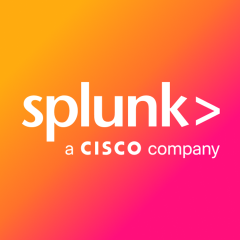What is our primary use case?
My main use cases for Splunk Enterprise Security are basically triage, ensuring cyber threat defence, and improving speed when defending the organization. Since I am the only one currently in the security team, we are growing this year and next, and we're expanding. Splunk Enterprise Security is improving the process to defend, basically.
How has it helped my organization?
The features of Splunk Enterprise Security benefit the organization. You can see threats much faster, helping detect something that the antivirus may miss. Splunk Enterprise Security can work with this, and when the antivirus has a hard position, by using proper detection rules that are well-configured, you can see what's going on in real-time, both endpoint-based and network-based.
What is most valuable?
The features of Splunk Enterprise Security that I find most valuable include Mission Control, which I really appreciate, the way accelerated data functions, making it really fast to see, the integration with SOAR, which is something really cool and integrates with automated processes, and the way to ingest threat intelligence feeds, which is an amazing feature as well.
Splunk Enterprise Security has helped improve my organization's business resilience, as we were able to detect an attack that was happening after hours and prevent it thanks to the detections. We stopped it immediately in a matter of about 30 minutes. Splunk Enterprise Security has improved my ability to predict, identify, and solve problems in real-time; it's not just proactive, but also really predictive. My organization uses Risk-Based Alerting in Splunk Enterprise Security, which speeds up our process to detect and our mean time to respond. It's very helpful, and after we improved the configurations, we have RBA working fine, something that will always be maintained; it may not be perfect, but we do our best to maintain it.
On average, my security ops team takes less than five minutes to remediate security incidents with Splunk Enterprise Security compared to our previous solution, which used to take hours because we needed to see different sites. We are using new threat detection features in Splunk Enterprise Security by ingesting a lot of threat intelligence feeds from our main vendor, which has significantly improved the indicator of compromise, the IOCs detections. We also use Sigma detections and adapt to Splunk.
What needs improvement?
The on-premise integration with SOAR could be more simple; the cloud version integrates with SOAR very easily, but the on-premise SOAR and on-premise Splunk Enterprise Security are really not that easy, so I would appreciate if that could be improved.
Additional features that should be included in the next release of Splunk Enterprise Security are the ability to integrate with other software and tool frameworks, beyond Sysmon, to avoid ingesting Sysmon logs from the endpoint, which can be very noisy at times, resulting in more straightforward detection and less resource-intensive licensing.
For how long have I used the solution?
I have been using Splunk Enterprise Security for four years.
What do I think about the stability of the solution?
I have experienced downtime, crashes, and performance issues with Splunk Enterprise Security due to a hardware issue, which we were able to quickly fix thanks to the backup recovery. However, it took about one day, and it highlights the need to move to clustering, which I've discussed with my leadership team.
What do I think about the scalability of the solution?
I would assess the stability and reliability of Splunk Enterprise Security as needing clustering. It ensures it remains operational all the time, which means you can see cyber attacks. When it's down, you can't see anything.
We currently rely on disaster recovery and backup recovery, which takes time to recover, during which you're basically blind, so I'm pushing my leadership team to switch over to a clustering environment for constant availability. Right now, the server we have meets the hardware requirements, and we have moved to new hardware.
We're considering moving to cluster environments to scale in the future, probably in a couple of years.
How are customer service and support?
I would evaluate customer service and technical support for Splunk Enterprise Security as excellent; when we open tickets for troubleshooting, 99% of the time, it relates to our Linux environment. I have no personal complaints about the support.
How would you rate customer service and support?
Which solution did I use previously and why did I switch?
Prior to adopting Splunk Enterprise Security, Splunk was already in place when I came on board at Educational Federal Credit Union.
How was the initial setup?
In the beginning, we were using disparate security solutions that integrate or import data into Splunk Enterprise Security. Now we are adapting to completely switch to the Splunk Enterprise Security side to have a single-pane-of-glass view of everything, minimizing the integrations with the vendors such as EDR, DLP, and the firewall.
What was our ROI?
I have seen a return on investment with Splunk Enterprise Security. My executive team has noticed improvements; we were able to save on other solutions, which increased budgeting for future projects thanks to Splunk Enterprise Security and the licensing optimization, allowing us to invest in other tools.
What's my experience with pricing, setup cost, and licensing?
My experience with pricing, setup costs, and licensing with Splunk Enterprise Security has been challenging in the past due to the expensive licensing model, which was driven by Sysmon delivering a lot of unnecessary noise. We don't use Splunk just for security; we also use it for other departments.
We have shared the license between security and development departments, making sure to minimize ingestion logs from the endpoints, including workstations and servers. We are currently leveraging EDR telemetry ingested to Splunk, which saved a lot of licensing money while allowing us to see what we're looking for.
What other advice do I have?
My advice to other organizations considering Splunk Enterprise Security is that it's the leader in SIEM globally. You have a lot of customization and data normalization, meaning you can detect anything you want compared to other SIEMs. Splunk Enterprise Security is worth the investment because it provides exactly what you need if you are a true cyber defender. I also network with friends from a company, Next-Gen Systems, which is leading in detection and investing in developments and integrations with Splunk due to its scalability.
On a scale of one to ten, I rate Splunk Enterprise Security a ten.
Which deployment model are you using for this solution?
On-premises
Disclosure: My company does not have a business relationship with this vendor other than being a customer.
























